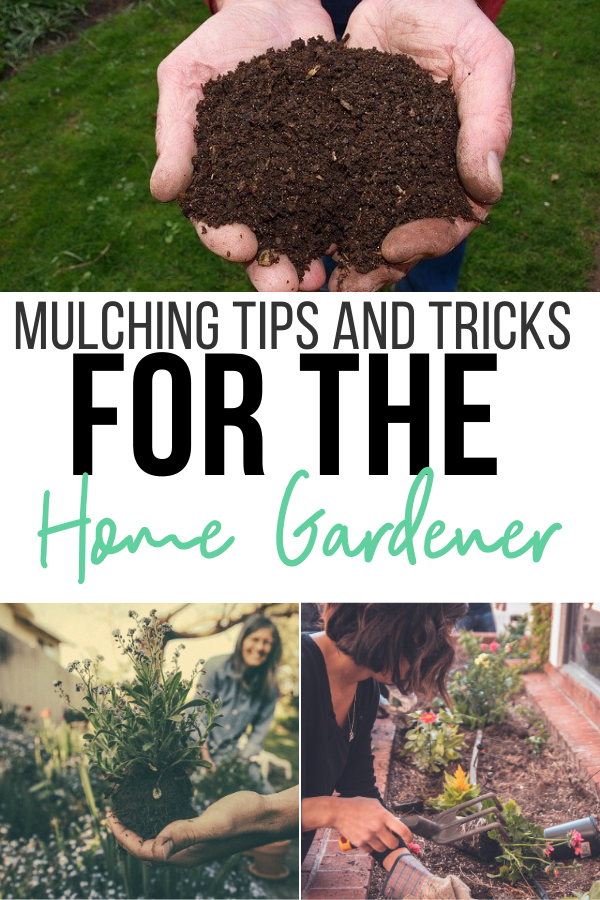This post contains affiliate links, which means I will make a commission at no extra cost to you should you click through and make a purchase. As an Amazon Associate I earn from qualifying purchases.
Mulching tips and tricks? If you are going to be doing some landscaping, consider reading on how to use mulch properly and the best variety you might want to go with. Mulch is excellent for weed control, keeping roots warm in the winter and cooler in the summer, and it is great for keeping moisture locked in for the plants after watering. If you have low shallow-rooted plants, it is a great way to protect them from being uprooted from high winds; it also gives nutrients to the soil as well as your plants. Mulch truly has many benefits, and it is worth the time and money to put it down.

If you didn't know, not all mulch is created equal! Some mulch has stronger points, and others have weaker points depending on how you will be using it. Once you take time and learn the correct way to use the mulch and what variety to pick, you will be able to reap the benefits of your hard work.
Proper Mulching Tips and Tricks
How Much To Lay Down
When you go to spread out mulch, you want to aim for 2-3 inches thick. If you do too thick, it can be a hiding spot for bugs, and you are just wasting money. Don't mulch right up to the base of the plants, as it can cause rot.
Trees and Shrubs
Mulching trees and shrubs are similar to flower beds, but make sure not to add mulch right up against the trunk. By doing that, you will be at risk for disease and rot in your tree, as well as allowing bugs to infest. Spread 2-3 inches thick, and don't mulch right up against the roots or trunk of tree and shrubs.
Weed Before Lay Mulch
Make sure you take time to weed before you go and lay down the mulch. Make sure to pull any weeds and grass; this will help keep weeds from popping up.
Different Types of Mulch
Organic - Organic is made of materials anywhere from compost, bark, wood, leaves, grass clippings that will decompose and add nutrients to your soil. This will be beneficial for a few years, and than you will need to add more or replace the mulch you have down.
Inorganic - Inorganic mulch is made of items like rocks, rubber chips, plastic sheeting and more. It doesn't add any benefits to your soil or plants like organic.
Most Popular Types of Mulch Used
Rubber Mulch
This is made of recycled rubber and tires. Not really meant for flower beds, but best to be used for playgrounds, walkways, and even driveways. Generally lay anywhere from 2-4 inches thick.
Leaf Mulch
This is where you take leaves that have been left to rot and decompose for a year slowly. This is best to be used in sandy soils, vegetable gardens, and around fruit trees. It is rich in magnesium and calcium, which will help nourish your plants.
Straw
Straw is a very affordable option, but it has some downsides. It can attract mice in the winter, and if the wind blows pretty good, it will blow right out of the area you have used for mulching. It is good to use for wintertime to much around roses to protect but recommended to remove when warmer weather arrives.
Wood Chips
This is one of the most used mulches. It is excellent to be used for decoration, and you have a variety of options for shapes and colors. It is recommended that you lay down some weed barrier first, and even a layer of compost to give nutrients to plants. Sometimes mulch can cause a nitrogen deficiency in plants and can stunt their growth. So it is essential to feed your plants with fertilizers or manure if you go this route.
